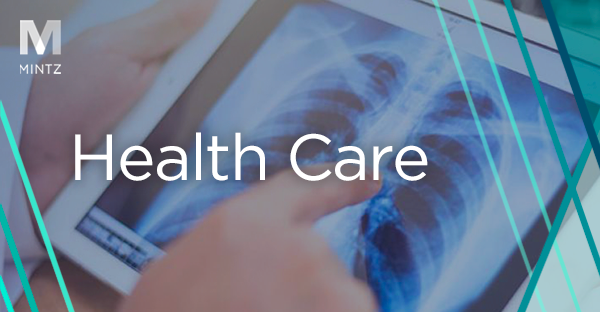
COVID-19 Viewpoints
Filter by:
DHS Seeks Public Comment on Proposed Alternatives to I-9 Process – Comment Deadline is Two Weeks Away
September 28, 2022 | Blog | By Juan Steevens
The Department of Homeland Security is seeking public comment on its proposed changes to I-9 document examination requirements, including one which would create a framework allowing DHS to pilot or implement permanent alternatives to in-person I-9 document examination requirements.
The Government's Long Game for Investigating COVID-era Relief Fraud
September 16, 2022 | Blog | By Eoin Beirne
Various COVID relief programs pumped $5 trillion into the economy, incredibly quickly, and with relatively minimal vetting. Within that enormous and necessary set of economic stimulus packages was likely the greatest amount of fraud committed on the government in the shortest amount of time in history. This article takes a look at the various issues facing government agencies as they attempt to investigate allegations of PPP fraud related to pandemic-era applications and the role of the Pandemic Response Accountability Committee in coordinating and overseeing these investigations.
Telehealth Update: Assessing PHE Flexibilities, Pending Legislation Entering Fall 2022
September 1, 2022 | Blog | By Ellen Janos, Cassandra Paolillo
Many of the flexibilities upon which telehealth providers have come to rely in recent years are tied to the federal Public Health Emergency related to the COVID-19 pandemic (PHE). As we move into Fall 2022, we review the current state of the PHE flexibilities around Medicare reimbursement and prescription of controlled substances, examine pending legislation that, if passed, would bring greater certainty to patients and providers, and discuss what we know about the status of a possible PHE extension.
CDC Shifts Approach and Loosens COVID-19 Quarantine Recommendations, including for Most Workplaces
August 15, 2022 | Blog | By Corbin Carter, Michael Arnold
On August 11, 2022, the Centers for Disease Control and Prevention (CDC) once again revised its public health recommendations regarding COVID-19 prevention measures in general community settings, including non-healthcare workplaces. In doing so, the CDC acknowledged that “COVID-19 is here to stay,” and seemed to shift its focus from viral containment to lessening the risk of severe illness and death associated with the virus. Chief among these changes is the CDC’s removal of its quarantine recommendation – individuals are no longer advised that they should quarantine following close contact exposure to COVID-19, regardless of their vaccination status, where they do not experience symptoms or test positive. Mintz attorneys Corbin Carter and Michael Arnold discuss these new revised recommendations and its impact on employers.
EEOC Updates Screening, Testing, and Mandatory Vaccination Policies
July 26, 2022 | Blog | By Danielle Bereznay
After several months, the EEOC has once again updated its guidance and answers regarding the ongoing COVID-19 pandemic’s interaction with anti-discrimination laws, with a particular focus on the workplace screening, testing, and mandatory vaccination policies. This guidance, updated on July 12, 2022, provides important clarifications to Section A (Disability-Related Inquiries and Medical Exams), Section C (Hiring and Onboarding), Section G (Return to Work), and Section K (The ADA and COVID-19 Vaccinations). Mintz Employment Attorney Danielle Bereznay discusses the key details.
California Court Strikes Down Board Diversity Law: Now What?
April 14, 2022 | Blog | By Jennifer Rubin
Jen Rubin, chair of Mintz’s ESG practice group, looks at the recent California court decision striking down the state’s law mandating corporate board seats for underrepresented communities. She says boards still need to dedicate themselves to a meaningful process for seating the right board and offers suggestions for ways to ensure community representation.
HRSA Demands Repayment from Providers that Failed to Comply with Provider Relief Fund Reporting Requirements
April 11, 2022 | Blog | By Jean D. Mancheno
Under the Coronavirus Aid, Relief, and Economic Security Act (CARES Act), the Health Resources and Services Administration (HRSA) of the Department of Health and Human Services (HHS) is authorized to distribute funds from its Provider Relief Fund (PRF) to certain providers. These providers can then use the funds to support COVID-19 prevention, preparedness, and response, or to alleviate loss of patient care revenue. However, HRSA requires that providers receiving PRF funds comply with certain requirements, including post-payment reporting requirements. HRSA is now notifying providers that failed to comply with the reporting requirements that they must return the PRF funds they received.
DHS to End Temporary COVID-19 Policy on Expired List B Identity Documents on May 1, 2022
April 4, 2022 | Alert | By Arash R. Bahar
This alert discusses DHS’s termination of its temporary COVID-19 policy allowing employers to accept expired List B identity documents for I-9 purposes and covers what’s required of employers.
Telehealth Update: A Federal Appropriations Bill, A Positive OIG Report, and Good News from HHS
March 22, 2022 | Blog | By Ellen Janos, Cassandra Paolillo
Last week saw a lot of great news in the world of telehealth. On March 15, President Biden signed into law H.R. 2471, the “Consolidated Appropriations Act, 2022”, which extends many of the Medicare telehealth flexibilities put in place during the COVID-19 pandemic for a period following the end of the Public Health Emergency (“PHE”). The same day, the OIG issued a report highlighting the positive impact telehealth had on increasing access for beneficiaries during the first year of the pandemic. Then, during a press conference on March 18, HHS Secretary Xavier Becerra said that HHS will seek to sustain and expand access to telehealth services after the public health emergency ends. While these developments signal the continued expansion of telehealth, there is still some uncertainty surrounding coverage, reimbursement and licensure flexibilities that have allowed telehealth to flourish for the past two years.
New York State HERO Act Designation Expires
March 21, 2022 | Blog | By Evan Piercey
On March 17, 2022, the designation of COVID-19 as an airborne infectious disease that presents a serious risk of harm to the public health under the HERO Act ended. The New York State Department of Labor (“NYSDOL”) declined to extend this designation. The most immediate effect of this designation ending is that the activation of workplace exposure prevention plans mandated under the HERO Act is over.



